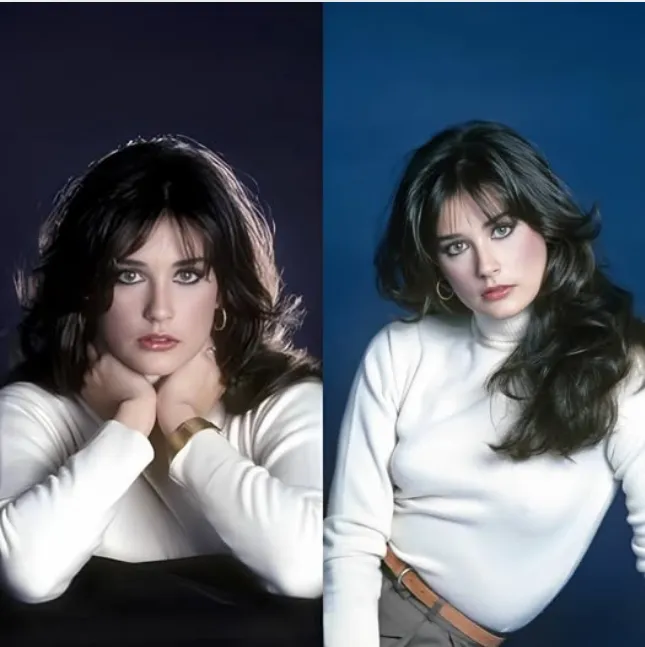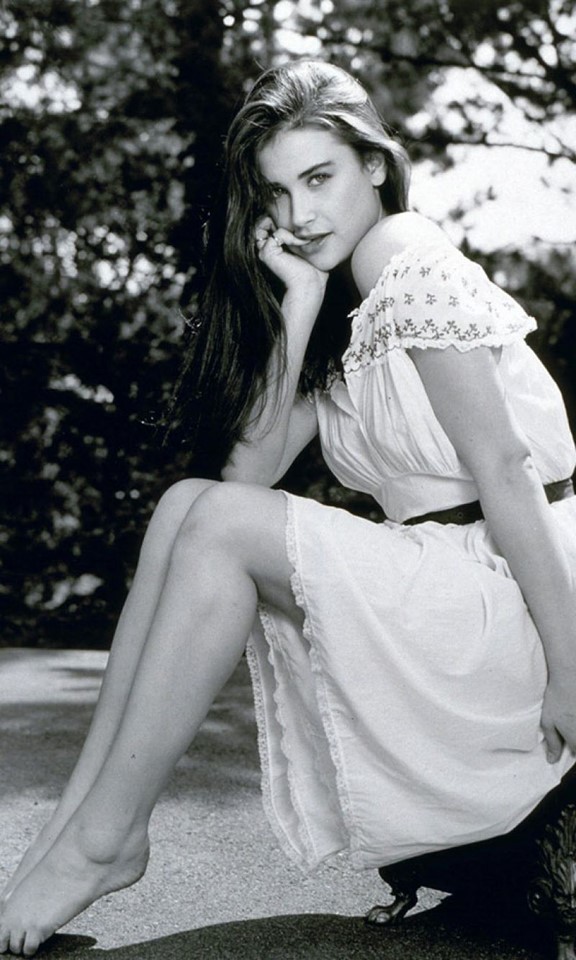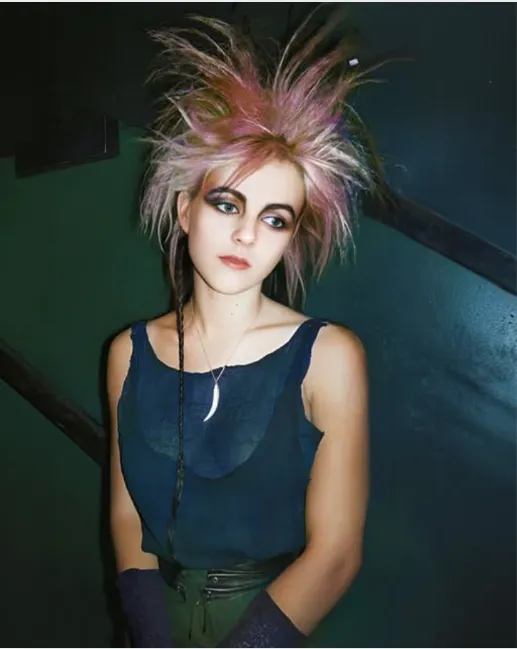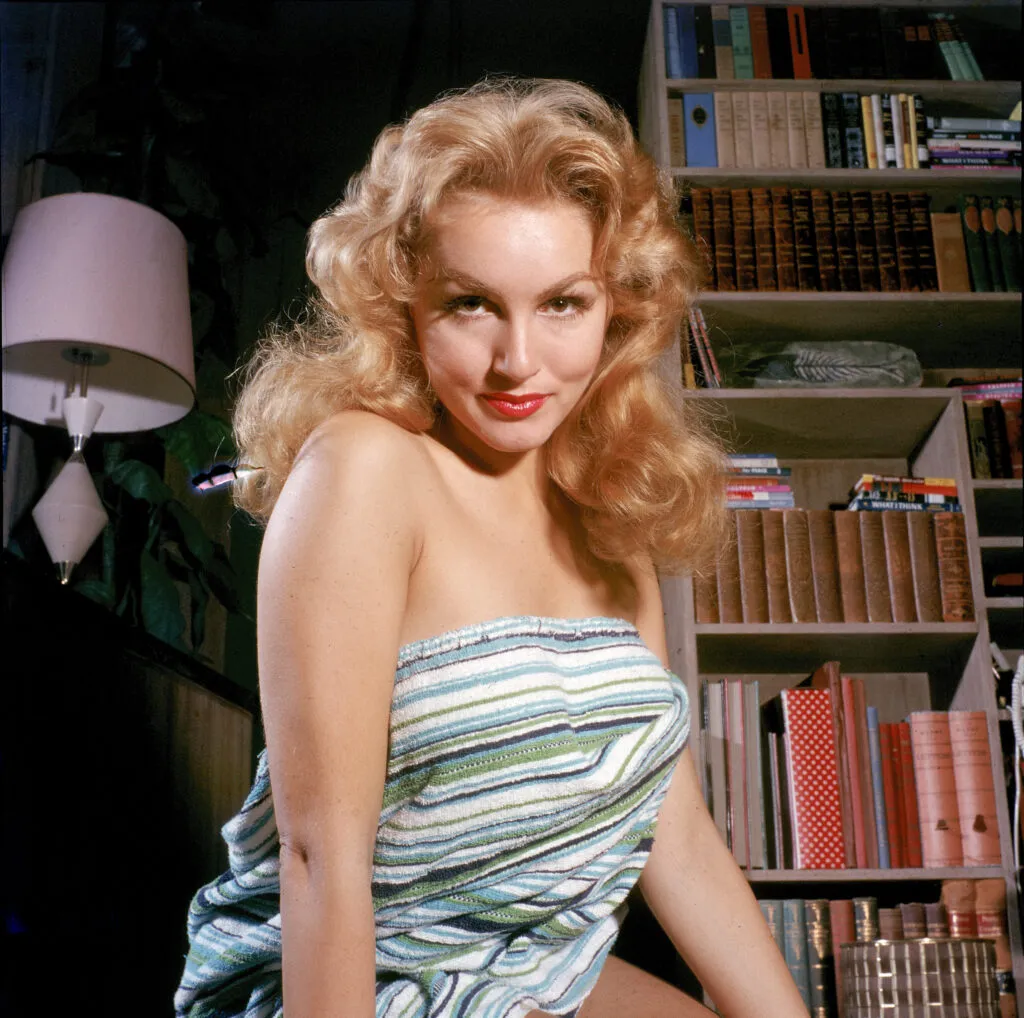Discover Demi Moore’s unexpected journey from cult sci-fi horror to Hollywood legend.
Before she became one of the highest-paid actresses in Hollywood and one of the most recognizable faces of 1990s cinema, Demi Moore’s path to stardom began in a way that was far from glamorous. Long before multimillion-dollar paychecks and blockbuster films, her earliest screen credits were tucked away in the corners of low-budget dramas and cult horror movies. For Moore, whose life had already been marked by struggle and resilience, these modest beginnings became the foundation for one of Hollywood’s most fascinating careers.

Her official debut came with Choices (1981), a small-scale drama about teenage pregnancy. Moore appeared only in a supporting role, but the film marked a first step—an on-screen foothold in an industry where opportunities were scarce and competition relentless. While Choices did little to announce her as a rising star, it placed her in motion, setting her on a path that would soon gather momentum.
The following year brought a much more memorable chapter. Moore landed her first significant role in Parasite (1982), a 3D sci-fi horror film directed by Charles Band. The movie envisioned a bleak, dystopian future where grotesque creatures terrorized survivors, and Moore played Patricia Welles, a young woman swept into the chaos. By all accounts, Parasite was a strange, campy production, loved by cult audiences but dismissed by most critics. Yet for Moore, it was invaluable: her first opportunity to carry scenes, to test her presence in front of a camera, and to leave a lasting impression—even in a film where the special effects got more attention than the acting.

At that stage, Moore’s future in Hollywood was far from certain. But what she did possess was a striking screen presence, a mix of vulnerability and intensity that would later become her signature. It wasn’t long before casting directors began to take notice. By the mid-1980s, she was landing parts in films that defined a generation.
Her breakthrough into the cultural conversation came with St. Elmo’s Fire (1985), a film that captured the restless, privileged energy of young adulthood in the Reagan era. Moore played Jules, a glamorous but troubled party girl whose self-destructive tendencies gave the movie its most poignant moments. Surrounded by other young talents like Rob Lowe, Emilio Estevez, and Judd Nelson, she became part of what the media dubbed the “Brat Pack”—a group of actors who embodied the spirit of 1980s youth cinema. The label was sometimes limiting, but it also placed Moore in the spotlight.
Just a year later, she proved her range in About Last Night (1986), a romantic drama co-starring Rob Lowe. Adapted from David Mamet’s play Sexual Perversity in Chicago, the film was both bold and intimate, depicting the complexities of modern relationships with more honesty than most studio romances of the time. Moore’s performance, combining charm with emotional depth, resonated strongly with audiences and critics alike. It became clear that she wasn’t content with being typecast as just another pretty face from the Brat Pack. She was a serious actress with staying power.

And then came Ghost (1990). If her earlier work had positioned her as a rising star, Ghost made her a household name. Starring opposite Patrick Swayze and Whoopi Goldberg, Moore played Molly Jensen, an artist grieving the sudden, violent death of her lover. The film’s blend of romance, supernatural mystery, and heartfelt drama struck a chord worldwide, becoming the highest-grossing film of that year. But it was Moore’s raw performance—the grief in her eyes, the vulnerability in her voice—that turned Ghost into something more than just a blockbuster. The pottery-wheel scene, set to “Unchained Melody,” remains one of the most iconic moments in cinematic history, forever etched into pop culture.
Throughout the 1990s, Moore’s career soared. She chose roles that demanded both physical commitment and emotional intensity, challenging the boundaries of how women were represented on screen. In A Few Good Men (1992), she held her own against heavyweights like Tom Cruise and Jack Nicholson, portraying a military lawyer determined to uncover the truth. In Indecent Proposal (1993), she played a woman torn between love and financial temptation in a provocative story that sparked endless public debate.

Her willingness to take risks reached its peak with Disclosure (1994), a corporate thriller in which she portrayed a powerful executive accused of sexual harassment. At a time when conversations about gender and workplace power dynamics were only beginning to enter the mainstream, Moore’s role was both timely and daring.
By the mid-1990s, Moore wasn’t just a star—she was one of Hollywood’s most bankable names. She famously earned a then-record-breaking $12.5 million for her role in Striptease (1996), becoming the highest-paid actress in history at that time. Though the film itself was critically panned, the salary milestone was seismic. It symbolized a shift in Hollywood economics, proving that female stars could command paychecks equal to, or even greater than, their male counterparts.

That same fearless spirit carried into G.I. Jane (1997), in which she shaved her head on-screen to play a Navy SEAL trainee enduring brutal military training. The role demanded intense physical preparation and came to embody Moore’s commitment to challenging herself and defying expectations. While the movie received mixed reviews, her transformation became an enduring cultural moment, celebrated as a symbol of strength and resilience.
Off-screen, Moore’s influence was just as significant. Alongside her acting career, she became a producer, co-founding a company that developed projects tailored for complex female leads. She also helped redefine celebrity culture with her highly publicized personal life. Her marriage to Bruce Willis made them one of Hollywood’s ultimate power couples, and later, her relationship with Ashton Kutcher kept her in the media spotlight well into the 2000s.
Yet for all the glitz and drama, what has remained constant in Moore’s career is her ability to reinvent herself. From low-budget horror films to romantic blockbusters, from courtroom dramas to action thrillers, she has continually sought roles that pushed boundaries. She never allowed herself to be pigeonholed, and in doing so, she opened doors for other actresses to demand both respect and opportunity in an industry notorious for typecasting women.
Looking back, those early roles in Choices and Parasite might appear unremarkable on the surface. But they were the essential first steps in a journey that would redefine what it meant to be a female star in Hollywood. They introduced a young actress willing to take risks, to work her way up from the margins, and to seize control of her own narrative.

Today, Demi Moore is recognized not only for her iconic performances but also for her resilience, her trailblazing career decisions, and her enduring influence on Hollywood. Her story is one of ambition, reinvention, and survival—proof that even the humblest beginnings can lead to extraordinary heights.
From cult horror to the pinnacle of 1990s superstardom, Moore’s career is a testament to the power of perseverance. She may have started with Choices, but over four decades later, her body of work proves she always had the courage to make her own.




-1755679305-q80.webp)
